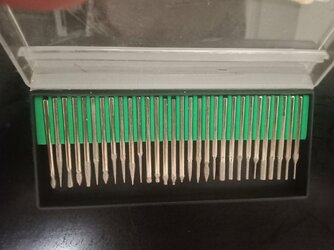rbscebu
Girls call me Makaluod
This 120 Gotta 6/8 full hollow came with one of those horrible "Bengall" SRs that everyone should avoid. I needed to take that Bengall out of circulation so that others would not suffer.
As received, the Gotta was not too bad. The scales were broken, a fare amount of wear on both the spine and bevel and some rust on the bevel both sides that extended to the edge.


First in this restoration is to make a suitable set of timber (I'm a timber sort of bloke) scales. I am going to try and inlay the "GOTTA" brass inlay part of the original scales into the new timber scales. I have chosen Burmese teak for these new scales.
Today I cut out the scales profile in teak and then set about cutting the "GOTTA" inlay section out of the original celluloid scales. The celluloid was 2.5mm thick and my teak was 3.5mm thick, so I sanded the celluloid piece down to 2mm thick. Hopefully this will give sufficient backing to the celluloid piece when inlaid.
My first problem is that I didn't allow enough width in the teak scales to accommodate the celluloid inlay.

I considered decreasing the height of the celluloid piece but decided that would not looked balanced with the stroke width of the brass lettering. Over the weekend I will design and cut out a new set of scales, still in Burmese teak, that will better suit the height of the inlay piece.
My thoughts are to use a mini router to cut away the timber to insert the celluloid piece in as an inlay. Maybe I should first play with this idea on a scrap piece of teak before trying it out on the new set of teak scales.
Once I finish this SR restoration, I will probably PIF it to a worthy member.
As received, the Gotta was not too bad. The scales were broken, a fare amount of wear on both the spine and bevel and some rust on the bevel both sides that extended to the edge.
Today I cut out the scales profile in teak and then set about cutting the "GOTTA" inlay section out of the original celluloid scales. The celluloid was 2.5mm thick and my teak was 3.5mm thick, so I sanded the celluloid piece down to 2mm thick. Hopefully this will give sufficient backing to the celluloid piece when inlaid.
My first problem is that I didn't allow enough width in the teak scales to accommodate the celluloid inlay.
My thoughts are to use a mini router to cut away the timber to insert the celluloid piece in as an inlay. Maybe I should first play with this idea on a scrap piece of teak before trying it out on the new set of teak scales.
Once I finish this SR restoration, I will probably PIF it to a worthy member.
Last edited:



